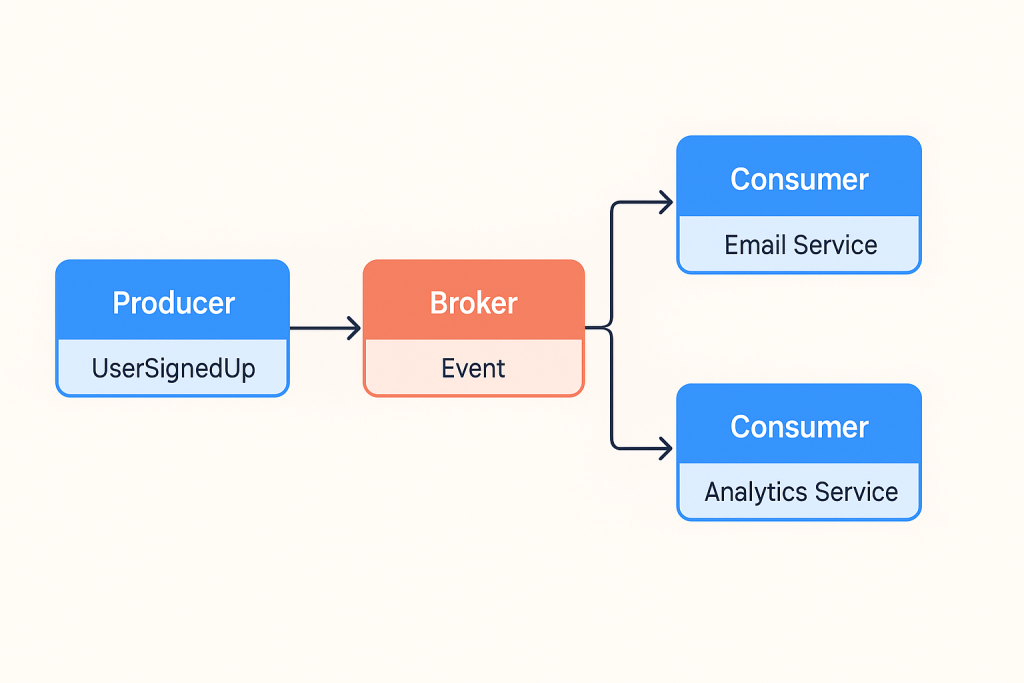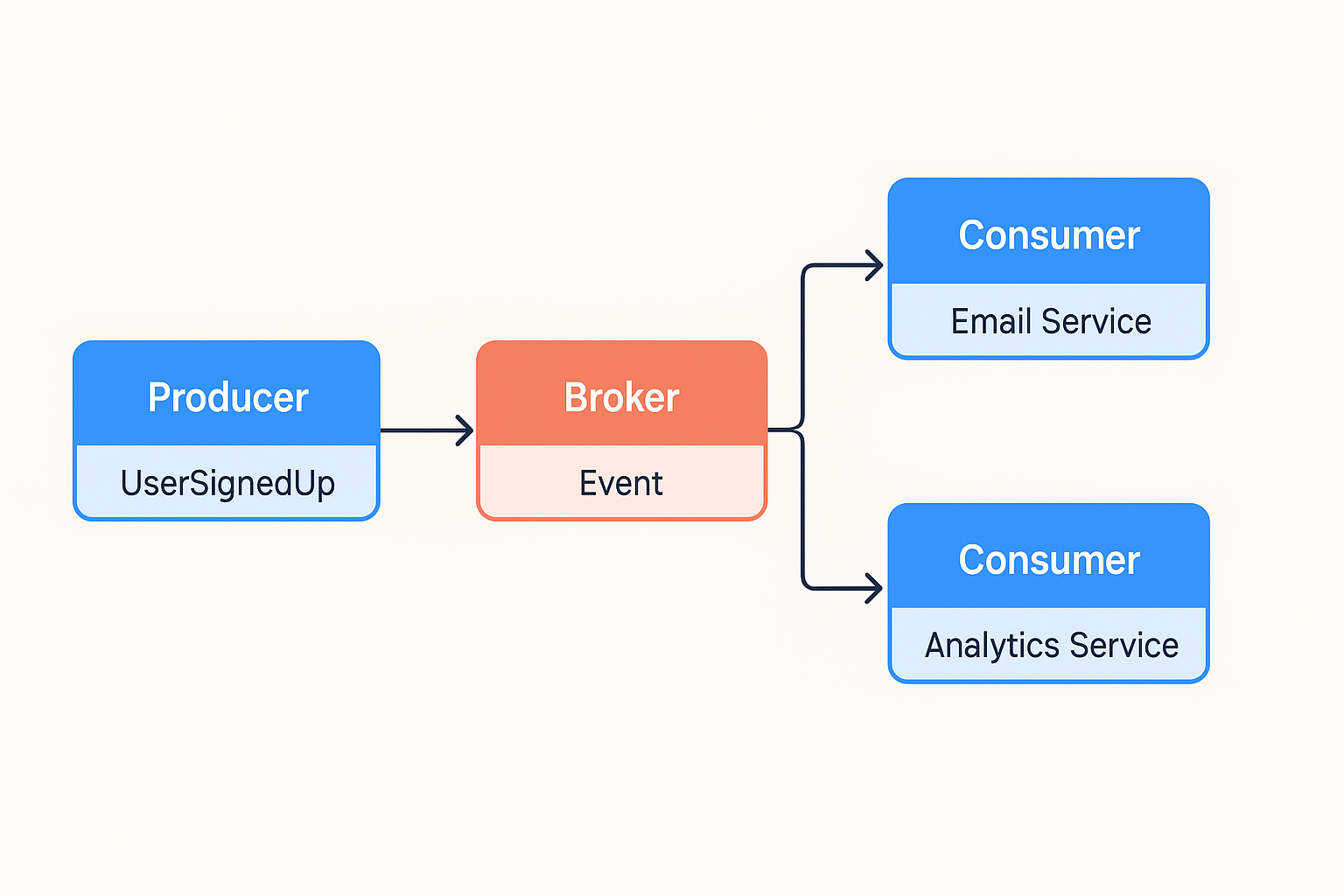Introduction
Modern applications need to be fast, scalable, and loosely coupled. One way to achieve this is through Event-Driven Architecture (EDA) — a design pattern where services communicate by sending and reacting to events, rather than calling each other directly.
Think of it like a chain reaction: When something happens (“UserSignedUp”), it’s broadcast to the system. Any component that cares about it reacts — without the sender knowing (or caring) who those components are.
Why Event-Driven Architecture?
1. Loose Coupling
In a traditional system:
- Service A calls Service B’s API directly.
- If Service B changes or is down, Service A can break.
In an event-driven system:
- Service A just publishes an event.
Service B (and C, D, E…) subscribe and react if they want.
Result: You can add/remove subscribers without changing the publisher.
2. Scalability
You can process events in parallel, add more consumers when traffic spikes, and scale each service independently.
3. Asynchronous by Nature
Users don’t have to wait for a chain of API calls. Work happens in the background — improving performance and user experience.
4. Extensibility
New features can simply subscribe to existing events. No need to modify the existing system.
When to Use It
- Microservices architectures
- Systems with high transaction volumes
- Real-time notifications & analytics
- IoT data ingestion
- Game servers and multiplayer events
How It Works
The basic flow in EDA:
- Producer publishes an event (e.g., “OrderPlaced”).
- Message Broker (RabbitMQ, Kafka, Azure Service Bus, AWS SNS/SQS) receives and stores it.
- Consumers subscribe and react (e.g., send confirmation email, start payment processing, update stock).

Example: RabbitMQ with C#
Here’s a minimal working example showing how to publish and consume an event.
Publisher (Producer)
using RabbitMQ.Client;
using System;
using System.Text;
class Publisher
{
static void Main()
{
var factory = new ConnectionFactory() { HostName = "localhost" };
using var connection = factory.CreateConnection();
using var channel = connection.CreateModel();
channel.QueueDeclare(queue: "userEvents",
durable: false,
exclusive: false,
autoDelete: false,
arguments: null);
string message = "UserSignedUp: [email protected]";
var body = Encoding.UTF8.GetBytes(message);
channel.BasicPublish(exchange: "",
routingKey: "userEvents",
basicProperties: null,
body: body);
Console.WriteLine($"[x] Sent {message}");
}
}Consumer
using RabbitMQ.Client;
using RabbitMQ.Client.Events;
using System;
using System.Text;
class Consumer
{
static void Main()
{
var factory = new ConnectionFactory() { HostName = "localhost" };
using var connection = factory.CreateConnection();
using var channel = connection.CreateModel();
channel.QueueDeclare(queue: "userEvents",
durable: false,
exclusive: false,
autoDelete: false,
arguments: null);
var consumer = new EventingBasicConsumer(channel);
consumer.Received += (model, ea) =>
{
var body = ea.Body.ToArray();
var message = Encoding.UTF8.GetString(body);
Console.WriteLine($"[x] Received {message}");
};
channel.BasicConsume(queue: "userEvents",
autoAck: true,
consumer: consumer);
Console.WriteLine(" [*] Waiting for events...");
Console.ReadLine();
}
}RabbitMQ vs Kafka
- RabbitMQ: Great for traditional message queues, task distribution, and smaller-scale EDA.
- Kafka: Built for high-throughput event streaming, large data pipelines, and event replay.
For starting with EDA, RabbitMQ is often simpler to set up and reason about.
Conclusion
Event-Driven Architecture can decouple services, improve scalability, and make adding features easier.
By using brokers like RabbitMQ or Kafka, you let your applications talk through events instead of direct calls — leading to more resilient, adaptable systems.
If you’re starting small, try RabbitMQ for rapid prototyping. If you’re aiming for big data pipelines or streaming analytics, consider Kafka.
Either way, once you start thinking in events, you’ll see opportunities to simplify your architecture everywhere.
